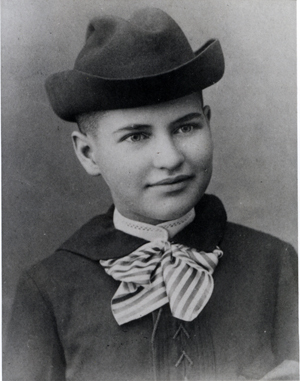Overview
The Beginning
Since the chartering of the University of Nebraska in 1869, the Board of Regents wanted to ensure and increase the usefulness of the University. The Board of Regents decided to create a preparatory department for the University's welfare. The preparatory department or the Latin School, which was the name given to it soon after its establishment, came about due to the fact that secondary education in Nebraska was minimal in some areas and barely existent in other areas of Nebraska. Nebraska students, entering the University, were poorly prepared for the college curriculum. To turn the eager students from furthering their education would go against the concept of the University. In turn, if this happened, it would have jeopardized the integrity of the University as well as threatening its survival. However, letting anyone in is not any better. Certain scholastic expectations and standards must be followed as a prerequisite for entrance into the University.
No explicit provision in the University's charter called for the formation of this department or for its support. Following suit of other universities in the Midwest like University of Michigan, the Board of Regents took a chance. On June 13, 1871, at a Board of Regents meeting the new chancellor, Allen R. Benton implemented a plan for the course of study for the preparatory department, and was soon adopted.
Course of Study
The course of study focused on classical studies such as Latin, rhetoric, ancient history, algebra, geometry, and Greek, because knowledge of these subjects would build mental discipline and improve moral character. In addition to the classical focus, there was an inclusion of modern physical and social science studies in the curriculum so; physical geography and United States history were added. In 1872, two curriculum tracks appeared, the "Classical" and the "Scientific," which corresponded to the work in the Latin School with that of the University's curriculum.
Entrance Requirements
Entrance into the Latin School was open to any male or female, who had to be at least fourteen years old, exhibiting good moral character, and most importantly, be able to pass an entrance examination in reading, spelling, English grammar, practical arithmetic, and descriptive geography.
Instruction
The first classes for the preparatory department were held in September 1871, coinciding with the University's term. Instruction for the classes was given by tutors to professors. The head tutor was the Principal of the Latin School.
The first principal of the Latin School was George E. Church. He was principal from the opening of the department until 1875 when the Board of Regents promoted him to Professor of Latin Language and Literature. As principal of the Latin School, Church was the only non-cleric on the original faculty. In 1882, he left his twelve year teaching career at the University when he was fired by the Board of Regents. He continued on in Fresno, California to become a Judge on the Fresno Superior Court.
With the beginning of the department, the duties of the Principal were unclear and not outlined yet. Some of the tutors were mostly students, employed part-time; however, the inadequacy of their number bothered Chancellor Benton but his plea was unheeded. Nonetheless, due to the enrollment pressure the majority of the preparatory workload fell on the University professors and including the Chancellor, himself. The purpose of the Latin School was to provide instruction in the elementary branches as well as to unofficially prepare common school teachers. This multi-faceted philosophy for the Latin School would, later in decade, cause conflict.
However, the instructional tools were basically the skill of the instructor and a textbook. Allen and Grennough's Latin Grammar, Goodwin's Greek Grammar, Liddell's Rome, Olney's Algebra, and Gray's Elements of Botany were the textbooks used in for instruction. The methodology of instruction was lecture and rhetorical recitation.
Changes in Course of Study
Over the years, the course of study was adapted with the changes and needs of the University as well as the performance of the preparatory students. These changes can be seen in the Board of Regents minutes and papers as well as the Catalogues and Bulletins of the University. For example, in 1875, the Board of Regents extended the Scientific preparatory course to two years instead of the one initially established. With the changes in the course of study, Chancellor Benton felt that at times, the University was lowering the academic standards. Maintaining and improving the academic reputation of the University was important in the early history of the school. In addition to the reputation of the University, it also needed students to ensure its effectiveness and survival, the Latin School shared this paradox also.

